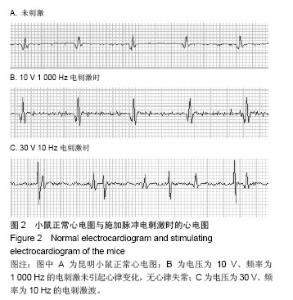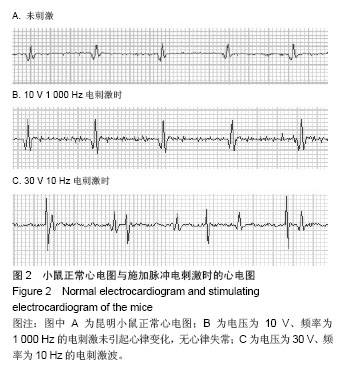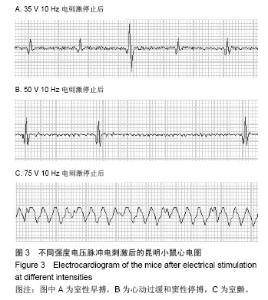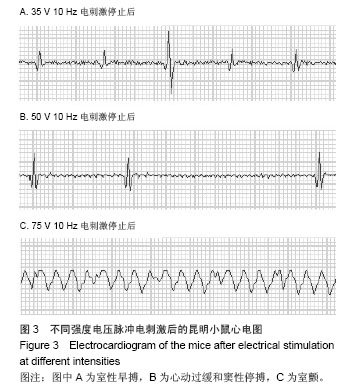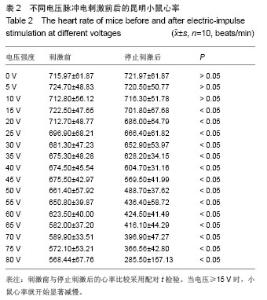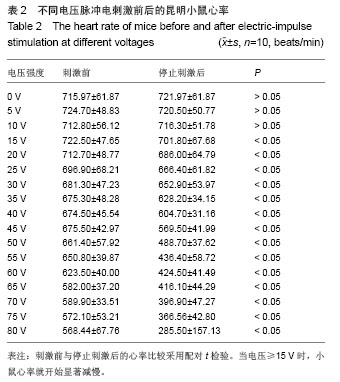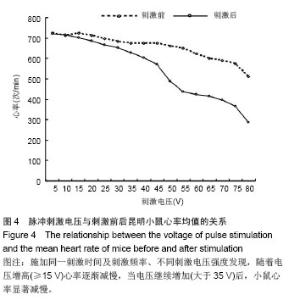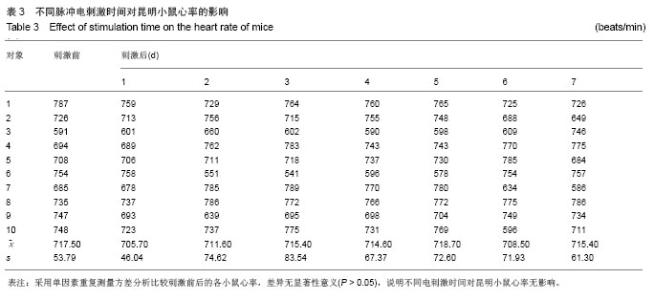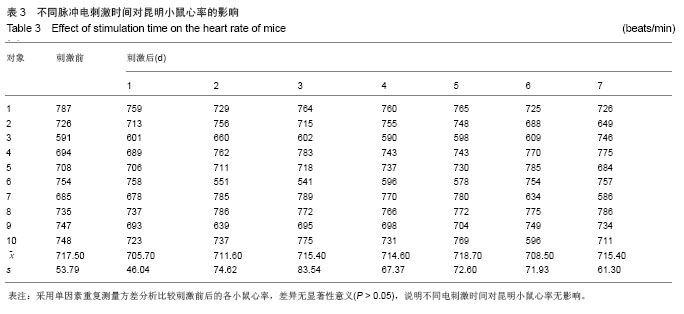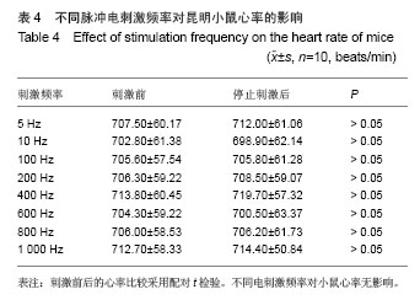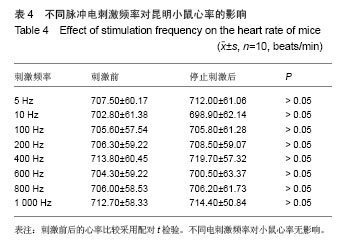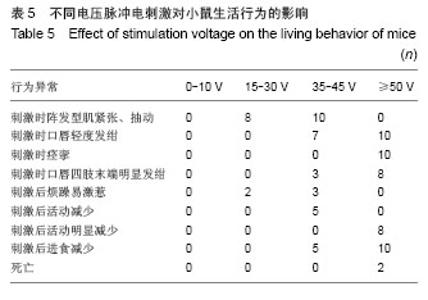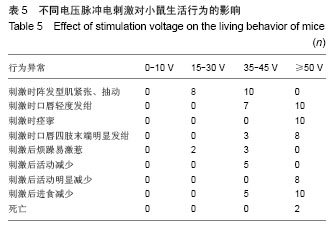| [1]Hofmann GA, Dev SB, Dimmer S, et al. Electroporation therapy: a new approach for the treatment of head and neck cancer.IEEE Trans Biomed Eng.1999;46(6):752-759.
[2]Lee E W, Chen C, Prieto V E, et al. Advanced Hepatic Ablation Technique for Creating Complete Cell Death: Irreversible Electroporation.Radiology.2010;255(2):426-433.
[3]杨开波,王彬.无抽搐电休克治疗期间心率血压观察及分析[J].四川医学.2012,33(4):664-665.
[4]Fish R. Electric shock, Part II: nature and mechanisms of injury.J Emerg Med.1993;11(4):309-312.
[5]Esses SI, Peters WJ. Electrical burns: pathophysiology and complications. Can J Surg.1981;24(1):11-14.
[6]张玲,张彦,段明军,等.清醒状态昆明小鼠随日龄变化的心电图分析[J].中国实验动物学报,2010,18(2):113-117.
[7]徐新萍,左红艳,王少霞,等.高压脉冲电流对家兔心脏功能与结构的影响[J].解放军医学杂志,2011,36(6):633-635.
[8]Preston E, Courtice GP. Physiological correlates of vagal nerve innervation in lower vertebrates.Am J Physiol.1995; 268:R1249-1256.
[9]王洋,李亘松.电刺激迷走神经对蟾蜍心率和心率变异的影响[J].中国应用生理学杂志,2010,26(2):229-232.
[10]孙海基,艾洪滨,崔希云.电刺激迷走背核对大鼠心电活动的影响[J].山东师范大学学报:自然科学版,2003,18(4):70-71.
[11]王艺明,刘兴德,董为伟,等.电刺激大鼠岛叶皮质及皮质下中枢对心脏自主神经功能的影响[J].中国临床康复,2004, 8(21): 4244-4246.
[12]Liu H. Progress of forensic medicine in the research of injuries of cardiac muscle,bone and skeletal muscle by electric shock.Injury Prev.2010;16(S1):A273.
[13]任文涛,王英元.大鼠电击伤后血清CK和LDH变化与损伤时间关系的研究[J].中国当代医药,2011,18(10):16-17.
[14]Fineschi V, Karch SB, D'Errico S, et al. Cardiac pathology in death from electrocution.Int J Legal Med.2006;120(2):79-82.
[15]余志斌,圣娟娟.心肌细胞缝隙连接重塑与心律失常[J].生理学报, 2011,63(6):586-592.
[16]陈士良,张文,郭静,等.心肌缺血时迷走神经对房室传导调节功能的研究[J].中国心脏起搏与心电生理杂志,2005,19(4):288-290.
[17]Chen PS, Chen LS, Cao JM, et al. Sympathetic nerve sprouting, electrical remodeling and the mechanisms of sudden cardiac death.Cardiovasc Res.2001;50(2):409-416. |


